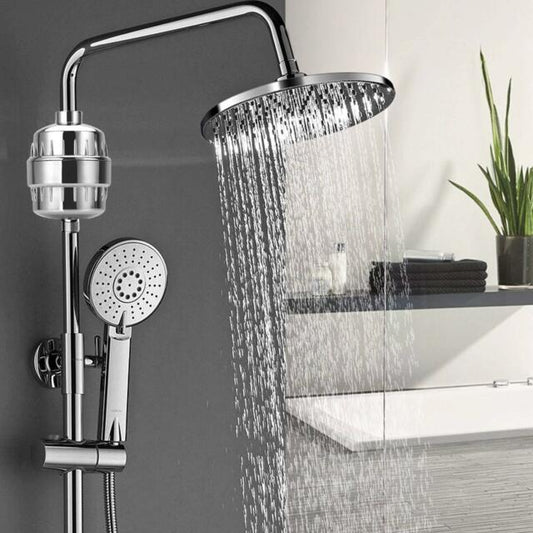Does Reverse Osmosis Remove Fluoride?
Does reverse osmosis (RO) remove fluoride from water?
The simple answer is yes. This system eliminates fluoride content and other toxic impurities from water.
If you want to learn how RO can remove fluoride and whether you need to purchase it, read this article further.
How Does Reverse Osmosis Remove Fluoride?
There are different types of water filters available in the market. The reverse osmosis (RO) filter system is the most effective of them all. Besides using a variety of filtration techniques, which help to trap the contaminants from the water, RO also uses a technology known as reverse osmosis membrane.
So, how does RO eliminate fluoride from water? RO removes several contaminants present in the water, and fluoride is one of them. This filter system treats water at high pressure and passes it through the semi-permeable membrane, which contains tiny pores. These holes allow water to pass while obstructing large contaminants from flowing any further, including fluoride. Additionally, this tap water that contains contaminants, called wastewater, gets out of the system.
You also need to know that this process occurs at a continuous rate. Hence, water continually enters the chamber, and forcibly passes through the RO membrane, whereas wastewater leaves the drainpipe. Since the fluoride particles are large-sized, this system throws them out along with contaminants.
How Much Fluoride Reverse Osmosis System Can Remove
It completely depends on the quality of the RO membrane. However, no matter what the membrane is made of, it is a great system than others. Some experts believe that a reverse osmosis system can eliminate around 80% to 90% of fluoride from your water.
You need to know that this percentage is excellent than other filtration systems, which don’t offer fluoride removal. Therefore, the RO system is popular among homeowners for removing fluoride and other impurities.
What Else Does RO Remove from Water?
In addition to getting rid of fluoride from your water, RO also helps you reduce or eliminate the following harmful components from water.
- Chlorine
- Sulfates
- Asbestos
- Detergents
- Cadmium
- Lead
Why do You Need to Remove Fluoride?
Most people wonder why they even need to remove fluoride from drinking water. Today, around 67% of houses in the United States get fluoridated water.
It is important to note that the US Department of Health and Human Services suggests that the amount of fluoride in water should not be more than 0.7 mg/L. This is vital to lower the risk of dental fluoride in children. The primary reason for this recommendation is that the excessive amount of fluoride can lead to several problems in the human body.
Many organizations are also trying to stop the common practice of adding fluoride additives to water. They believe that once you add it to water, you can’t control the fluoride content. Thus, it may not be suitable for everyone, depending on their age, health, and other needs.
The following are some things that you need to know about fluoride.
- This element has some harmful properties in lower quantities.
- Most children already consume more than the daily recommended dose of fluoride because of toothpaste.
- The excessive amount of fluoride in your body can cause your bones to become prone to fracture.
- Fluoride can also harm the environment, as 99% of water is not appropriate to drink and flushed down through the drain.
Besides these adverse impacts of fluoride, a large amount of this element in water can increase the risk of developing underactive thyroid or hypothyroidism.
Do You Need a Whole-House RO System to Get Rif of Fluoride?
Wondering about whether you need to get a Whole-house RO system? If so, then you need to know that they are best to filter water before it enters into your taps. It is also effective in removing fluoride from water. However, it is not a great option if you want to save water.
That said, there is a solution – if you don’t want to waste the water, you need to think about the RO system’s placement. To solve this issue, most people install it at a point of use in their homes, such as kitchen sink. Keep in mind that they are also expensive and bulky.
Although you will not drink water from your bathroom tap, you need to consider getting fluoride-free water in the bathroom faucets for brushing teeth and taking bathe.
Benefits of Using Reverse Osmosis System
Experts recommend using a high-quality whole-house water filtration system to remove fluoride from tap water. The reverse osmosis filter systems made from premium quality material can help you get clean and safe water. The RO system has the following advantages.
- Provides crystal clear water
- Removes any agricultural or industrial contaminants, such as fluoride
- Provides you best tasting water without any odor
- Helps get clean water for house chores like cleaning dishes and doing laundry
If you are experiencing any hard water problems, such as a large amount of fluoride, it’s best to opt for a whole-house RO system. It provides you soft water and also saves you from developing health problems due to untreated water.
You can read about our other popular reviews on Culligan, Kinetico, Rayne Water, and waterboss.
Bottom Line
A reverse osmosis system is one of the most common choices among homeowners. It is due to its effectiveness and ability to remove almost every toxic contaminant and element. Because of these promising results, people are also using this system as a whole-house water system.
The RO can remove every element from lead and chlorine to sulfate and other toxic elements. In addition to it, this system is also great for removing fluoride. So, if you want to drink completely safe and healthy water, then it’s best to install an RO system in your house. But you need to spend more money on its installation compared to other filtration systems.






